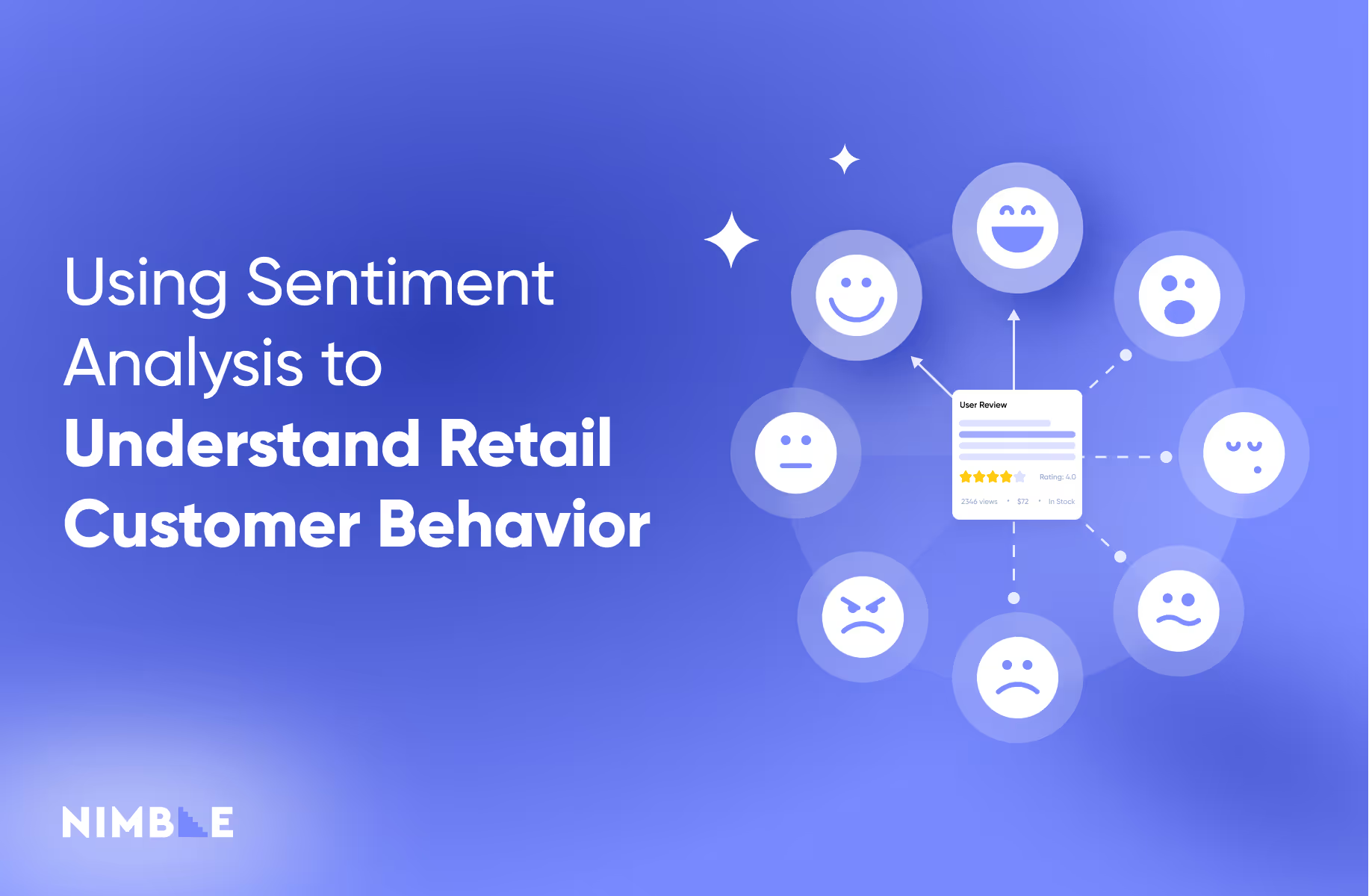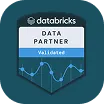Data Monitoring with the Medallion Architecture Framework: How to Ensure Data Quality, Compliance & Accuracy
Discover how better data monitoring across all layers of the medallion architecture framework can boost efficiency and enable better business strategy.


The medallion architecture framework has grown in popularity as businesses in all sectors are becoming increasingly more data-driven. These days, data fuels everything from pricing to hiring, marketing, product development decisions, and more. But, data-driven decisions are no better than random guesses if they’re fuelled by data that’s inaccurate, irrelevant, or poorly sourced.
Medallion Architecture provides a structured approach to organizing and processing data, but it’s not a magic bullet to solve all your data problems.
Without proper data monitoring across every stage in the medallion system, businesses risk introducing errors, compliance risks, and flawed decision making. Monitoring is essential to detect anomalies, ensure compliance, and maintain data accuracy.
This article explores why data monitoring is crucial within the Medallion Framework and provides best practices for ensuring data reliability across all three layers.
Key Takeaways
- Ongoing monitoring improves data reliability, reducing compliance risks and flawed decisions.
- The Bronze, Silver, and Gold layers each require distinct monitoring strategies.
- Implementing best practices ensures real-time detection and correction of data anomalies.
- Nimble’s technology provides scalable, automated monitoring solutions.
Wondering what medallion architecture is? This is blog #2 in our medallion architecture series. Click here to read Blog #1: What is Medallion Architecture? A Complete Guide to the Data Lakehouse Framework.
Why Data Monitoring Matters When Using the Medallion Framework
What Is Data Monitoring?
Data monitoring is the process of reviewing data to ensure it meets the quality, accuracy, and relevancy standards necessary for the data to perform its function.
How Does Data Monitoring Work in Medallion Architecture?
In the medallion framework, data monitoring means reviewing data at every stage of the framework to ensure it passes the requirements of each stage.
- Bronze data may be reviewed for relevancy and correct sourcing.
- Silver data may be reviewed for basic accuracy, formatting, and cleanliness.
- Gold data may be reviewed for its overall usefulness to specific needs, and compatibility data analytics systems or agentic workflows.
Data Monitoring as a Business Imperative
Data monitoring isn’t just a technical necessity—in a data-driven business, it’s an essential process that affects everything, especially if you’re using real-time data.
Poor-quality data leads to costly mistakes, regulatory fines, and inefficient operations. Without continuous monitoring, organizations risk basing critical strategies on inaccurate, incomplete, or outdated information, which can have far-reaching consequences.
The Impact of Data Quality on Business Decisions for Data-Driven Businesses
High quality data is essential for all industries. But for certain industries that rely on data for core functions, like finance, retail, and healthcare, data accuracy is mission-critical.
These sectors depend on real-time, high-quality data to power automated trading models, personalized customer experiences, and critical medical diagnostics. Any lapse in monitoring can have immediate and costly consequences.
3 Risks of Poor Data Quality Resulting from Poor Data Monitoring
1. Bad Business Strategy from Flawed Insights and Incorrect Decisions
Businesses rely on data to guide virtually every and any business decision. If the data feeding these decisions is inaccurate, it can have a wide-reaching impact on major strategic moves, which can affect revenue, customer retention, brand image, and internal morale.
For example:
- A SaaS business using competitive data from irrelevant competitors might set prices too high or too low, misallocate marketing budgets, or fail to identify shifting consumer behaviors.
- An e-commerce company using outdated competitor pricing data might undercut its own profitability or lose market share by pricing too high.
- A retailer relying on incorrect inventory data could overspend on stock that doesn’t match customer demand, leading to revenue loss.
2. Compliance Risks & Costly Fines
Regulations like GDPR, CCPA, and HIPAA require businesses to maintain accurate, transparent, and complete records. Failure to meet these standards can result in hefty fines well within the millions, legal consequences, and reputational damage.
Beyond legal issues, customers and stakeholders lose trust in businesses that mishandle data, which can directly impact revenue and brand loyalty.
3. Operational Bottlenecks & Wasted Resources
Even the simplest data errors can create a ripple effect of inefficiencies across entire workflows. The larger the dataset, the more expensive these inefficiencies become.
Incorrect transformations, missing values, or duplicate records mean that teams must spend additional time and money identifying and correcting issues instead of focusing on new projects. This can cause bottlenecks and delays that affect multiple teams.
For example, a financial firm might spend thousands of hours reprocessing transaction data due to missing timestamps or misclassified categories—delaying reporting and risking financial inaccuracies.
Curious how monitoring solutions can benefit your business? Contact us today for custom solutions.
Best Practices for Data Monitoring within Medallion Architecture
Data monitoring is important whether you’re working with bronze, silver, or gold data. The following are some key best practices for each step.

Bronze Layer: Monitoring Raw Data for Completeness and Availability
The Role of the Bronze Layer
The Bronze Layer of medallion architecture captures raw, unprocessed data from various sources, including APIs, databases, streaming services, and third-party providers.
Since this data arrives in an unrefined state, it may contain errors, missing values, inconsistencies, and duplicates. If these issues are not detected early, they can propagate downstream, leading to data contamination, faulty transformations, and flawed business insights.
Monitoring at the Bronze Layer focuses on ensuring that data completeness, availability, and structural integrity are maintained. The goal is to catch and resolve issues before they reach the transformation stage, reducing the need for expensive reprocessing and minimizing data loss.
Key Data Monitoring Focus Areas
Duplicate Record Identification
Detecting and eliminating duplicate records prevents inflated data volumes, redundant processing, and skewed analytics.
- Implement deduplication rules based on unique identifiers (e.g., transaction IDs, customer IDs, timestamps).
- Set up automated alerts when excessive duplicates are detected.
- Use hash-based comparison techniques to identify near-duplicates across datasets.
Schema Validation & Structural Integrity
Ensure that raw data adheres to expected formats before entering transformations.
- Validate data types, column structures, and mandatory fields to prevent ingestion failures.
- Implement schema evolution policies to handle changes in data source structures without breaking pipelines.
- Enforce format validation for timestamps, numeric fields, and categorical values.
Data Completeness & Availability Checks
Ensure that all expected data is present and accessible for processing.
- Monitor data ingestion logs for missing records or incomplete batches.
- Set up threshold-based alerts when significant gaps in data appear.
- Establish retry mechanisms for delayed or failed data ingestion events.
Anomaly Detection in Raw Data
Flag unusual patterns that indicate potential corruption or external tampering.
- Use machine learning or statistical models to detect outliers in incoming data streams.
- Track variations in expected distributions (e.g., sudden drops in transaction volumes).
- Compare data against historical trends to spot inconsistencies.
The Silver Layer: Monitoring Data Transformation Quality
The Role of the Silver Layer
At the Silver Layer, raw data is cleaned, enriched, and structured into a format suitable for analysis.
This stage involves deduplication, normalization, standardization, and enrichment processes. Errors in this layer can lead to incorrect insights, skewed reports, and unreliable AI model outputs.
Monitoring at this stage ensures that data transformations are applied correctly and consistently. It also helps detect processing failures, inconsistencies, and inaccuracies that might have been introduced during transformation.
Key Data Monitoring Focus Areas
Duplicate Record Identification
Ensure that cleaned datasets do not contain redundant entries to maintain accuracy and efficiency.
- Apply business logic to define what constitutes a true duplicate.
- Use fuzzy matching techniques to detect subtle variations of duplicate records.
- Implement periodic audits to verify that deduplication rules remain effective.
Transformation Errors & Data Mapping Issues
Validate that data has been correctly cleaned, normalized, and transformed according to your unique business rules.
- Monitor transformation jobs for failed or partial executions.
- Cross-check transformed values against expected outputs using validation rules.
- Track the lineage of key transformations to identify where errors were introduced.
Data Integrity Checks
Flag missing, incorrect, or inconsistent values that could lead to faulty analytics.
- Validate reference data integrity (e.g., ensure product SKUs match across datasets).
- Detect missing values and apply imputation strategies when necessary.
- Monitor join operations to prevent mismatches or lost records in merged datasets.
Drift & Consistency Checks
Ensure that transformation outputs remain stable over time and align with historical patterns.
- Track statistical distributions of key attributes before and after transformations.
- Identify drift in categorical values (e.g., sudden changes in customer segmentation).
- Compare transformed datasets against previous versions to catch unintended anomalies.
Gold Layer: Monitoring Compliance and Delivering Business-Ready Data
The Role of the Gold Layer
The Gold Layer represents the final, business-ready stage of the Medallion Architecture, where data is fully refined, structured, and validated for decision-making, reporting, and AI applications.
At this point, data must be accurate, compliant, and standardized, as it is used for business-critical operations, financial forecasting, and regulatory reporting.
Monitoring at the Gold Layer ensures that only high-quality, validated data reaches business users and enters BI dashboards, AI models, or customer-facing reports. This involves compliance verification, accuracy validation, and final checks for inconsistencies. Without robust monitoring, errors can result in regulatory violations, misleading business insights, and reputational damage.
Key Monitoring Focus Areas
Regulatory Compliance Checks
Ensure data aligns with standards such as GDPR, CCPA, HIPAA, PCI-DSS, and other industry-specific regulations.
- Implement automated checks for data retention policies, access logs, and encryption compliance.
- Track consent records and ensure personally identifiable information (PII) is handled properly.
- Audit access permissions to verify that only authorized users interact with sensitive data.
Data Standardization & Formatting Validation
Confirm that data conforms to expected formats and maintains consistency across different sources.
- Enforce naming conventions and coding standards for categorical variables.
- Validate timestamps, currencies, and regional formatting to prevent discrepancies.
- Standardize data across multiple sources to ensure alignment with reporting requirements.
Final Accuracy Audits & Quality Validation
Conduct last-stage validation to ensure that data is complete, correctly structured, and free from anomalies before being used for analytics or reporting.
- Compare final datasets against authoritative reference sources to confirm accuracy.
- Perform reconciliation checks to verify data consistency across different reporting layers.
- Implement business rule validation (e.g., revenue figures should always be positive, date ranges must be sequential).
How to Implement Automated Real-Time Data Monitoring With Data Pipelines
Ensuring high data quality is not a one-time process—data requires constant, continuous monitoring, especially when you’re using feeds of real-time data rather than static datasets.
Obviously, this is a lot of work for a data quality engineering team to do manually, especially considering the massive scale of data most businesses are working with these days.
Fortunately, AI-technology and automated solutions have been created to do much of the dirty work involved with data gathering, cleaning, processing, monitoring, and analysis, so your team can be freed to focus on more important tasks.
For example, Nimble’s Online Pipelines collects real-time raw data from many different sources and uses AI-driven technology to enable:
- Automated parsing, cleaning, and processing to transform raw bronze data into business-ready gold data.
- Scalable, automated compliance checks that adapt to evolving regulatory requirements and the different website and regional requirements for different public data sources.
- Ongoing anomaly detection to catch errors before they impact decision-making.
- Real-time data validation to keep data pipelines aligned with business needs.
With Nimble’s Online Pipelines, businesses can confidently integrate high-quality, compliant data into their workflows without the overhead of manual monitoring.
Use Case for Retail: How Nimble Automates Data Monitoring Across The Medallion Framework
A global e-commerce company depends on Nimble’s Online Pipelines to track competitor prices across multiple regions.
The Problem
Retail pricing is highly dynamic, with frequent fluctuations based on demand, seasonality, and promotions. Maintaining real-time pricing accuracy is crucial for staying competitive and ensuring that automated dynamic pricing strategies remain effective. Even minor discrepancies in pricing data can lead to lost revenue, compliance violations, or poor decision-making.
The Solution
By integrating Nimble’s automated monitoring capabilities, the company ensures high-quality data at every stage of the medallion data layer architecture:
Bronze Layer: Capturing and Validating Raw Pricing Data
- Availability Monitoring: Ensures competitor pricing data is ingested from all target sources without gaps or delays.
- Duplicate Detection: Identifies redundant price updates from multiple scrapers or APIs to prevent inflated data volumes.
- Anomaly Detection: Flags raw price data that deviates significantly from historical patterns (e.g., a sudden 90% discount).
- Source Integrity Verification: Confirms that collected prices originate from legitimate, trusted sources, preventing fake or manipulated data.
Silver Layer: Refining and Transforming Pricing Data
- Data Cleaning & Standardization: Converts price formats (e.g., currency normalization, tax adjustments) to ensure consistency.
- Error Detection in Transformations: Validates exchange rate conversions and discount calculations to prevent misleading price comparisons.
- Cross-Source Reconciliation: Matches prices across multiple data feeds (e.g., brand websites vs. third-party marketplaces) to resolve discrepancies.
- Completeness Checks: Ensures that all expected product categories, regions, and price points are accounted for in the cleaned dataset.
Gold Layer: Ensuring Business-Ready Pricing Data
- Regulatory Compliance Monitoring: Verifies compliance with regional pricing transparency laws, source robots.txt files, and consumer protection regulations.
- Final Consistency Audits: Confirms that final pricing data is aligned across dashboards, automated pricing models, and business intelligence tools.
- Integration for Real-Time Alerts for Pricing Anomalies: Integrates easily with business apps that can trigger instant notifications if a competitor changes a price significantly, allowing for rapid strategic adjustments.
- Integration for AI-Powered Price Optimization: Uses accurate, real-time pricing data that integrates easily into AI-based dynamic pricing models to maximize profit margins.
Business Impact
This end-to-end monitoring approach ensures that the company’s pricing data is accurate, reliable, and regulatory-compliant at every stage.
By leveraging Nimble’s automated Medallion-based data monitoring, the business can:
- React instantly to competitor price changes without relying on outdated or incomplete data.
- Ensure regulatory adherence to avoid penalties and protect consumer trust.
- Eliminate pricing inconsistencies across multiple channels to maintain a seamless customer experience.
- Optimize pricing strategies with confidence, knowing that the underlying data is clean, accurate, and up to date.
By implementing the advanced data monitoring framework built into Nimble’s Online Pipelines, the retailer can make smarter, data-driven pricing decisions that enhance competitiveness, increase revenue, and reduce compliance risks.
Key Takeaways and Next Steps: Our Advice for Implementing Data Monitoring within Medallion Architecture
Adopt Monitoring at Every Stage
Data monitoring is a continual process that must be embedded into each layer of the Medallion framework to maintain reliability and accuracy. Each layer requires a different focus:
- Bronze Layer: Ensure data completeness and availability by tracking missing records, detecting duplicates, and verifying source integrity. A strong foundation at this stage prevents contamination in later transformations.
- Silver Layer: Validate transformations to maintain consistency. Implement strict error-checking mechanisms to flag incorrect conversions, formatting issues, and misaligned data across sources.
- Gold Layer: Confirm compliance and deliver high-quality insights. Enforce regulatory standards, conduct final accuracy checks, and ensure business-ready data for decision-making.
Use AI & Automation for Scalable Monitoring
Manual monitoring is inefficient, slow, and prone to human error. To manage large-scale data flows, organizations must:
- Implement AI-driven anomaly detection to catch pricing inconsistencies, data corruption, and unusual trends in real time.
- Automate validation rules to flag incomplete, duplicate, or improperly formatted records before they impact analytics.
- Set up real-time alerts to notify teams when data falls outside expected thresholds, ensuring immediate corrective action.
Leverage Nimble’s Solutions for Reliable Data Quality
Ensuring high-quality, actionable data requires the right technology. Nimble’s Online Pipelines provide a scalable solution that integrates seamlessly with your existing data system and provides automated:
- Bronze Layer collection and source integrity.
- Silver layer parsing, cleaning, and standardization.
- Gold layer compliance, consistency, and ease of integration into data tools.
By implementing Nimble’s automated monitoring solutions, businesses can confidently maintain accurate, compliant, and business-ready data—eliminating costly errors, improving decision-making, and staying ahead in competitive markets.
Conclusion: Build Better Trust & Business Strategy with Continuous Data Monitoring
Data-driven organizations rely on accurate, compliant, and high-quality data. Without effective monitoring at every stage of the medallion architecture framework, businesses risk flawed insights, compliance violations, and operational inefficiencies.
By implementing real-time monitoring, leveraging AI-driven tools, and adopting best practices, companies can build trust in their data and drive more informed decisions.
FAQ
Answers to frequently asked questions

.avif)










